The JUICE space probe launched into space on April 14 by the European Space Agency is designed to study Jupiter and its icy moons. It will spend most of its time studying Ganymede, the largest moon in the Solar System. The JUICE will be able to see a lot of interesting things there.
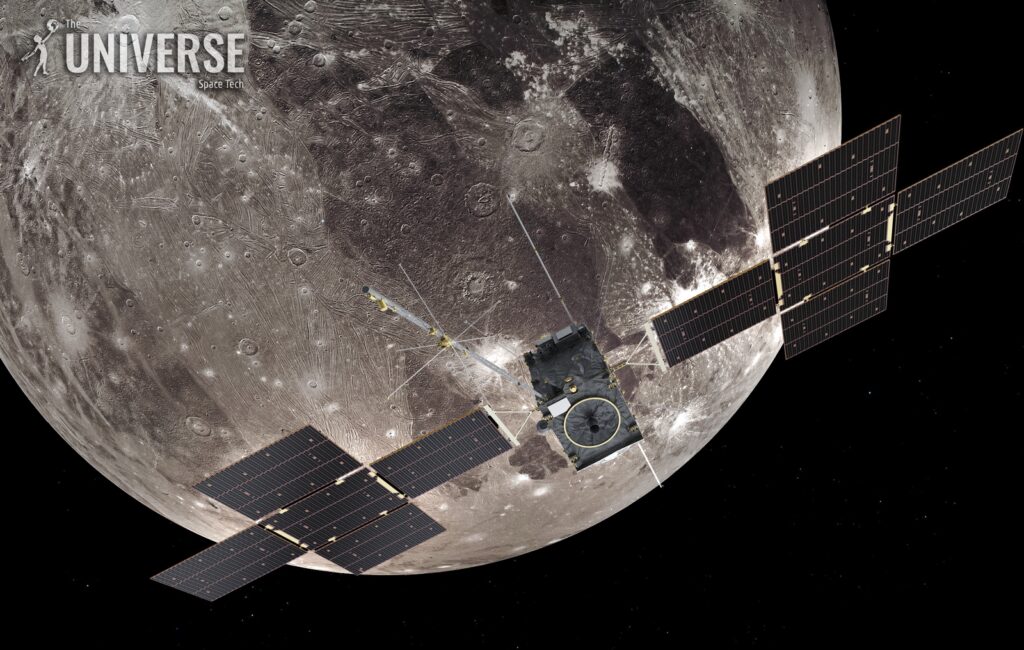
JUICE will explore Ganymede
Ganymede is the primary objective of the JUICE mission
On April 14, the JUICE spacecraft, created by the European Space Agency (ESA), was launched from the Kourou launch facility in French Guiana. It will spend the next few years traveling through the solar system until it reaches its destination, the gas giant Jupiter.
Various cameras, spectrographs, radars, devices for measuring magnetic and gravitational fields are located on board this probe. It will apply all these to the study of the four largest moons of Jupiter: Io, Europa, Ganymede and Callisto. At the same time, JUICE will spend the most time (30% of the total duration of the scientific work) studying Ganymede, which is the largest not only among the bodies orbiting Jupiter, but also among all the other planets’ satellites in the Solar System.
Launching JUICE
The largest satellite in the solar system
Ganymede is a really big body. Its diameter is 5268 km. This is about 2% more than its closest rival, Saturn’s moon Titan, and 8% more than the smallest planet in the Solar System, Mercury.
At the same time, the mass of Ganymede is only 45% of the mass of Mercury. This is because, unlike the planet closest to the Sun, which has a huge iron core, Jupiter’s largest moon consists mainly of silicates and ice, which are much lighter.
Ganymede orbits Jupiter in seven days. Its period is exactly twice as long as Europa’s, and 4 times longer than Io’s. This is due to the fact that all three bodies are in orbital resonance. The average distance of the largest satellite from the giant planet is 1 million 70 thousand km, that is, it is located approximately 2.5 times farther from Jupiter than the Moon is from the Earth.
Even so, tidal forces from the giant planet are strong enough to slow Ganymede’s rotation around its own axis and make it synchronous. As a result, the satellite always faces Jupiter with the same side. And the Sun rises in its sky only once a week.
Internal structure and magnetic field
Unlike neighboring Europa, with its smooth, bright surface, broken mostly only by cracks, Ganymede has a darker color and is almost entirely covered with craters. This incites scientists to think about the differences in the internal structure of the two celestial bodies.
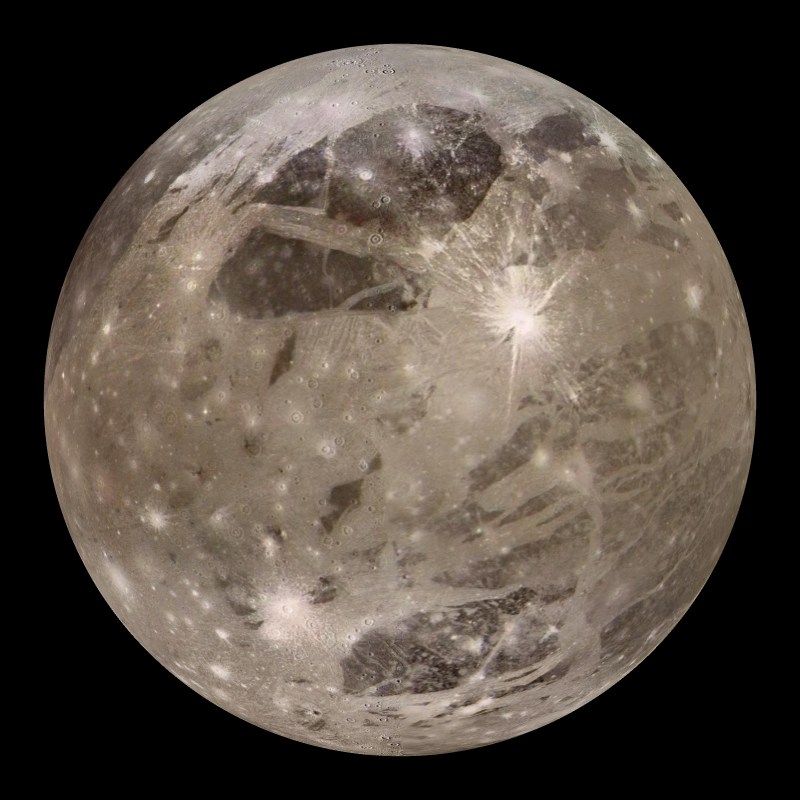
They were formed from the same mixture of stones and ice. However, on Europa, due to the fact that it is located closer to Jupiter, there was intense internal heating. As a result, the ice melted and all the silicate rocks ended up in the center.
On Ganymede, judging by the presence of very old craters on its surface and the absence of traces of cracks, there was no complete stratification. Although some traces of partial melting are present. What caused them is not known for sure, but this celestial body has one feature that Europa does not have: Jupiter’s largest moon is the only object of this kind with a powerful magnetic field. And it can exist only if there is a heavy core in its center, which rotates relative to the outer layers, creating a dynamo effect. That is, Ganymede cannot be just a continuous cold “salad” of ice and silicates.
Studying Ganymede’s magnetic field—where it comes from, what peculiarities it has, and how it interacts with the gas giant’s much stronger field—will be one of JUICE’s primal tasks.
The undersurface ocean
Most researchers agree that there is an ocean of liquid water under the surface of Ganymede. As for its depth and other parameters, opinions differ greatly. Some studies it may be several hundred kilometers deep. If so, it is the largest body of water in the solar system by volume.
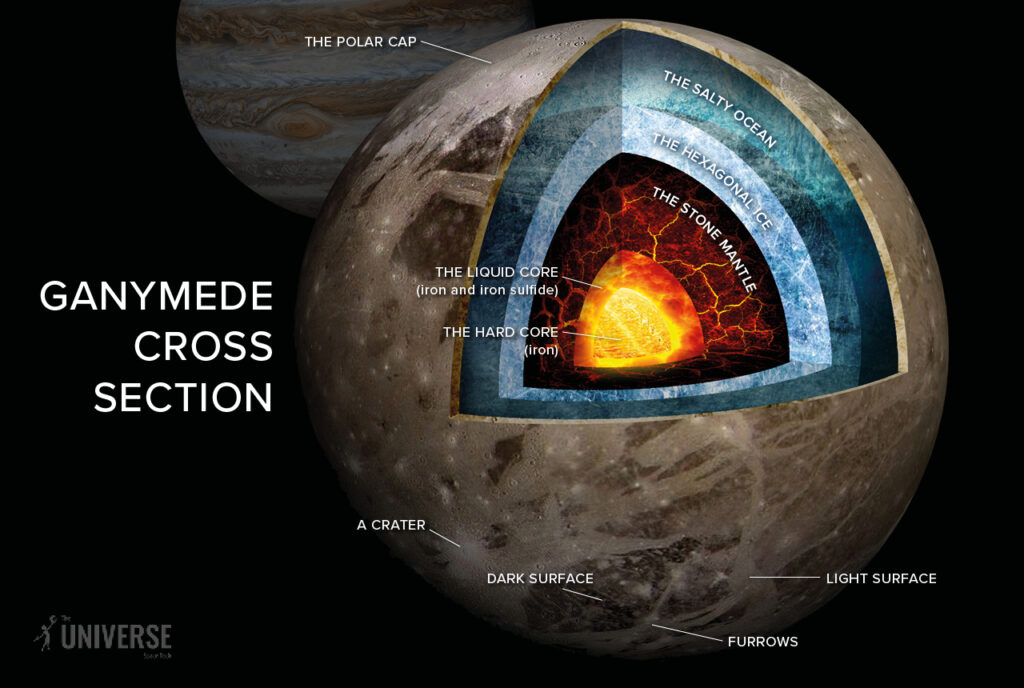
Other studies suggest that the oceans on Ganymede may be multi-layered. In this case, each of them should have a depth of several kilometers. And between them are ice layers many kilometers thick.
This ice can be interesting in itself. The pressure at great depth below the surface of Ganymede is very high, and therefore there are conditions for the formation of hexagonal ice or even more exotic modifications of it.
JUICE has to determine what is actually hiding under the surface of the satellite. For this, it is equipped with several devices, the most important of which are a radar and a gravimeter. The first of them will send radio waves to penetrate below the surface of the celestial body, then analyze reflected radiation and find irregularities in the deep structure. The second will measure variations in gravity on Ganymede. They exist on all large planets that have already been studied in a similar way, and are able to tell a lot about their internal structure. For example, somewhere under the surface of the giant satellite, individual “pockets” of liquid water or accumulations of silicate rocks may be hiding.
Ganymede: organics on the surface
Most likely, unlike the Europa, Ganymede doesn’t have underwater volcanoes. However, there are substances on it that can indicate the possibility of the existence of life. And you can find them just on the surface of Ganymede. The fact is that the outer layers of the satellite only partially consist of water ice. The rest is “dry ice” — solid carbon dioxide. In addition, there should be cyanide, sulfur dioxide, sulfuric acid and complex carbon compounds.
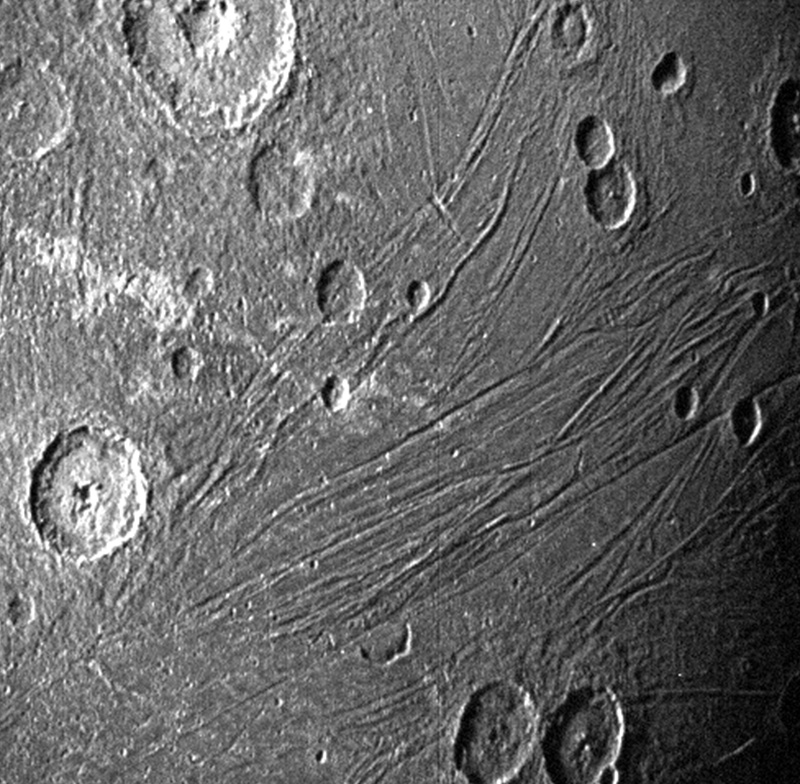
To find out what they are and what their origin is will be another task for JUICE. For this purpose, there are as many as three spectrographs on board, operating in the visible, ultraviolet and microwave ranges.
Another interesting feature of Ganymede is that it has a thin atmosphere that consists mainly of oxygen in three different forms: atomic (O), molecular (O₂) and ozone (O₃). It is unlikely that such an atmosphere could support life on the surface. But the thickness of the ice, enriched with this substance, could possibly nest living organisms.
The topographic of Ganymede
The most interesting task facing JUICE is the compilation of a topographic map of Ganymede. So far, spacecraft have photographed only individual fragments of its surface in high resolution. But the European space probe has to cover it all.
The most interesting feature of Ganymede is the mosaic of light and dark areas. The former contain a relatively small number of craters. It seems that just a few hundred million years ago melting of the surface took place here. They occupy approximately 70% of the globe.
The rest of the surface is occupied by darker areas. Definitely, they are older and they are almost completely covered with craters. The oldest of them are 4 billion years old, that is, they were formed at the very beginning of the existence of the solar system.
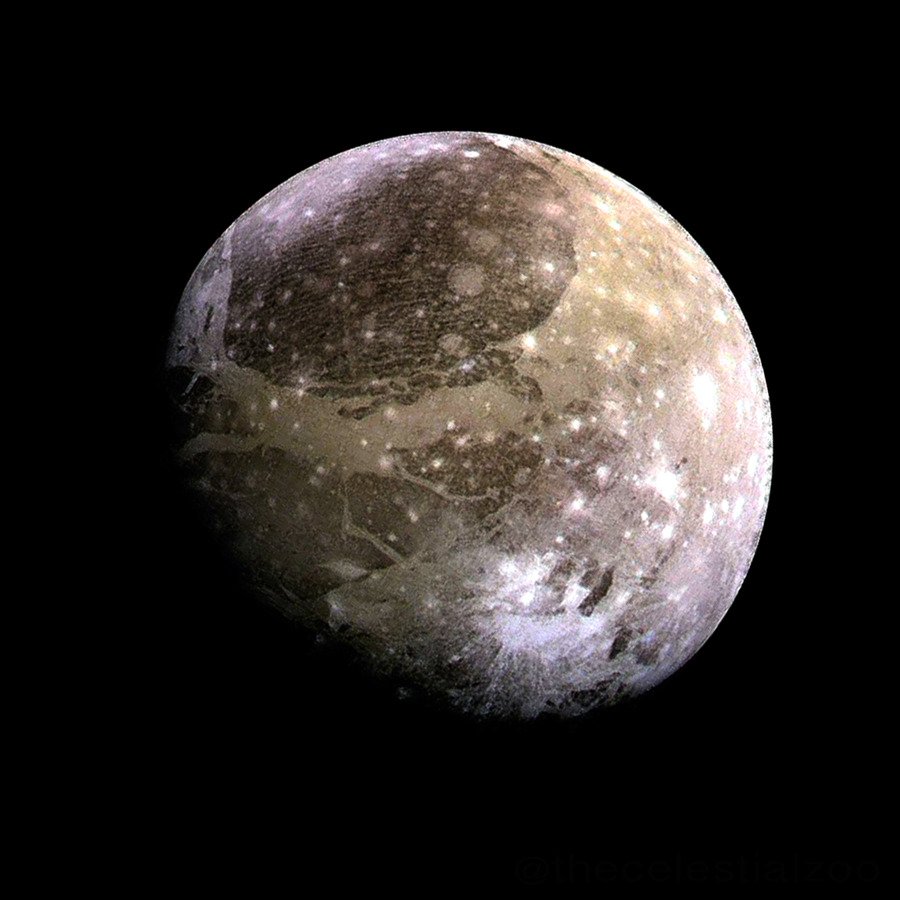
The largest dark area is the Galileo regio. It has the shape of a circle with a diameter of 3200 km and is very similar to the lunar seas, but, unlike them, it is not left by impact of a colossal body. Meanwhile, there are plenty of craters on it. The largest of them is the Memphis facula with a diameter of 360 km. Its characteristic feature is that it is almost flat, that is, the depression in its center is imperceptible.
Such objects are extremely common on Ganymede and are called palimpsests. Another characteristic detail of the surface of this satellite is numerous pits and ridges. Exploring them and creating a detailed map is one of the tasks of the JUICE mission.

